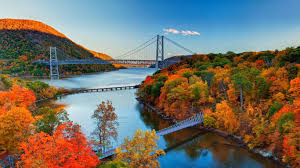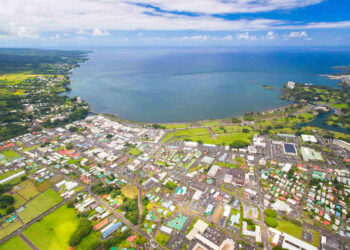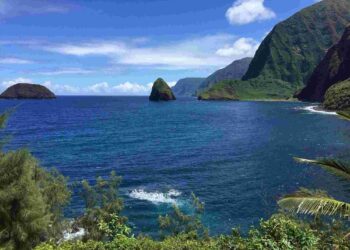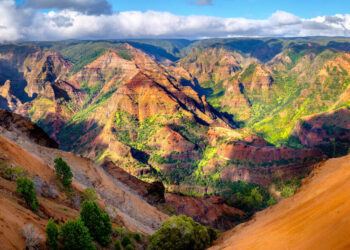Nestled along the serpentine path of the Hudson River, the Hudson Valley unfurls as a region of quiet splendor in New York State. Stretching from the northern edges of New York City to the state capital of Albany, this expanse melds rolling hills, historic estates, and vibrant small towns into a tapestry of natural and cultural richness. Once a corridor for Dutch traders and Revolutionary War strategists, the valley now beckons travelers seeking respite from urban clamor, offering a blend of pastoral beauty and echoes of a storied past. Spring unveils apple blossoms, autumn ignites fiery foliage, and winter cloaks the hills in stillness—each season lending its own hue to the journey.
Notable Insight: The Hudson River, often mistaken as a mere waterway, ranks among the world’s few rivers with a tidal estuary flowing both ways—its currents shift with the Atlantic’s pull, a phenomenon observable as far north as Troy.
How To Reach
The Hudson Valley’s accessibility enhances its allure. From New York City, the Metro-North Railroad traces the river’s eastern bank, delivering passengers to stations like Poughkeepsie, Beacon, or Hudson in under two hours. Fares hover around $20-$30 one way, depending on distance, with trains departing Grand Central Terminal frequently. For those favoring the road, Interstate 87 (the New York State Thruway) carves a direct route, though Route 9 offers a slower, scenic drive past riverfront hamlets.
Albany International Airport serves as a northern gateway, with car rentals bridging the final stretch to valley towns. Timing matters—early morning trains or weekday drives skirt the weekend rush of leaf-peepers and day-trippers.
Places to Visit
Beacon
Perched on the river’s edge, Beacon has shed its industrial husk to emerge as a haven for art and nature. The Dia Beacon museum, housed in a former Nabisco factory, showcases minimalist works—think steel sculptures glinting under skylights—open Friday to Monday for $20 admission. Mount Beacon’s trails reward hikers with sweeping vistas of the river and Catskills beyond; the incline takes an hour but demands sturdy shoes. Main Street’s galleries and cafes, like the vintage-chic Hudson Valley Vinyl, hum with local character.
Hudson
A two-hour train ride from Manhattan, Hudson balances grit and refinement. Warren Street, its spine, brims with antique shops and eateries—Wm. Farmer and Sons pairs rustic decor with farm-fresh plates. The Hudson Athens Lighthouse, a stubby sentinel in the river, offers tours by boat from June to October, revealing maritime tales for $25. Basilica Hudson, a reclaimed factory, hosts eclectic events; check schedules for art fairs or live music.
Sleepy Hollow
South of the valley’s heart, Sleepy Hollow wears its legend proudly. The Old Dutch Church and its graveyard, tied to Washington Irving’s headless horseman, draw literary pilgrims—free to wander, though guided tours cost $10. Philipsburg Manor, a preserved 17th-century estate, unveils colonial life with its mill and barns for $18 entry. October’s lantern-lit walks amplify the eerie charm, but book ahead.
Cold Spring
This riverside village exudes quaintness. Putnam County’s hiking trails, like Breakneck Ridge, test endurance with steep scrambles—views of Storm King Mountain justify the sweat. Antique stores line Main Street, while Boscobel House and Gardens, a Federal-style mansion, opens its lawns and orchards for $20, revealing 1800s elegance. Kayak rentals let you paddle the Hudson’s glassy surface, starting at $40 per hour.
Where to Stay
Inn at Tanglewood (Beacon): A Victorian retreat with river views, rooms start at $150 nightly—breakfast included.
The Maker (Hudson): Bohemian luxury in a trio of historic buildings; expect $300 per night for velvet-draped elegance.
Caldwell House Bed & Breakfast (Salisbury Mills): Cozy and colonial, near Storm King, from $130 with homemade scones.
Mohonk Mountain House (New Paltz): A grand resort with lakefront trails, all-inclusive at $600-plus, worth it for opulence.
Beyond the Highlights
The valley’s lesser-trod paths yield treasures. Olana, Frederic Church’s Persian-inspired estate near Hudson, melds art and landscape—its hilltop views frame the river like a canvas for $15 entry. Kaaterskill Falls, a two-tiered cascade near Catskill, plunges 260 feet; the half-mile hike is free but slick after rain. Storm King Art Center in New Windsor sprawls across 500 acres, its monumental sculptures dwarfing visitors for $20 admission. Evening river cruises from Kingston, starting at $35, glide past lighthouses as the sun dips below the horizon.
Frequently Asked Questions About Hudson Valley Cuisine
What defines the region’s food?
The Hudson Valley thrives on farm-to-table ethos. Orchards yield crisp apples—try Klein’s Kill Fruit Farms’ cider—while dairies craft sharp cheddars. Restaurants like Blue Hill at Stone Barns elevate the harvest with Michelin-starred precision, though reservations are elusive and entrees crest $50.
Where to eat affordably?
In Beacon, Meyer’s Olde Dutch dishes burgers for $15, while Hudson’s Grazin’ Diner slings grass-fed beef patties under $20. Farmers’ markets, like Poughkeepsie’s Saturday sprawl, offer bread, cheese, and preserves for a picnic under $10.
Any unique drinks?
Craft breweries abound—Captain Lawrence in Elmsford pours hoppy IPAs for $8 a pint. Tuthilltown Spirits in Gardiner distills Hudson Whiskey, with tastings at $25. Apple cider donuts, often paired with hot mulled cider, are a fall staple at stands like Tantillo’s Farm, costing $1 each.
Seasonal specialties?
Autumn brings pumpkin ravioli and roasted squash; spring offers ramps foraged from woodland edges. Fishkill Farms’ pick-your-own apples, paired with their cider, peak in September for $30 per bag.
Final Reflections
The Hudson Valley resists easy definition. Its hills cradle Revolutionary ghosts—Washington’s headquarters linger in Newburgh—while its waters powered 19th-century mills now reborn as galleries. Each town stitches its own thread into the region’s fabric: Cold Spring’s quiet, Hudson’s edge, Beacon’s renewal. To stand atop Mount Beacon or trace the river’s curve is to feel time layered like sediment—Dutch settlers, painters, and modern seekers all leaving their mark. It’s a place that rewards the curious, where every bend in the road or ripple on the water whispers something enduring, something earned.











